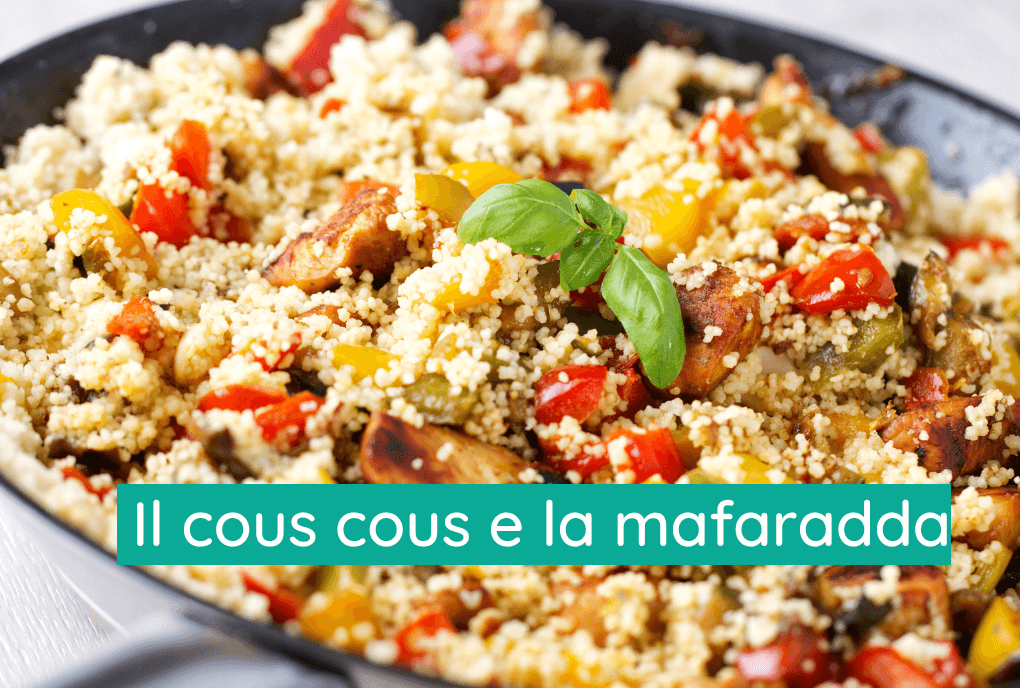
Cous cous and mafaradda: history of a Sicilian tradition
La history of couscous may seem difficult to connect to beautiful Trinacria as the collective imagination tends to associate this dish with the African continent. But this is nothing but a cliché! In fact, the culinary tradition of western Sicily includes among its specialties the so-called Trapani-style cùscusu, included, among other things, in the list of traditional Sicilian agricultural and food products.
So, the connection with this dish is strong. Then, in the island, there is a food and wine event dedicated to it that has made it the world’s capital San Vito Lo Capo: the Cous Cous Fest. September 16 to 25 the festival of cultural integration is a time for celebrating brotherhood among peoples but also for the strong cultural and tourism promotion of Sicily. In addition to being able to taste delicacies made from this ingredient, participants can also attend free concerts and performances right on the beautiful local beaches.
But what are the origins of cous cous? Answering this question is difficult, but not impossible. Knowing the history of cous cous means, in fact, making a thousand-year journey between the African continent and the Sicilian land, passing through the Arab invasion and finally arriving in Trapani.
Brief history of cous cous
As anticipated, establishing the origins of cous cous is not simple at all. With certainty, it is known that the oldest written attestations date back to the thirteenth century and relate to how to prepare them. These have ensured its success: being a poor dish that is easy to preserve, was for centuries the ideal way to feed nomadic traders.
Merchant trades as well as the Arab invasion, therefore, favored its spread to Mediterranean countries, including Sicily. But what does cous cous mean? The term of North African origin means “chopped into very small pieces” as the dish in each version is in the form of minute grains of durum wheat semolina processed with water and steamed.
According to some scholars, however, there could be three hypotheses concerning the origins of this dish.
- The former places the birth of the semolina-based dish between the 11th and 12th centuries between Mauritania and Tunisia
- The second shifts the date to the 7th century in the sub-Saharan area
- The last one sees couscous consumed in classical times in the Berber territories of Numidia, the ancient Roman province today corresponding to the territories between Morocco and Tunisia. During excavations in this area, in fact, archaeologists found tools for preparing cous cous in the grave goods of some tombs.
Given the difficulty in clearly establishing a chronology, figuring out who invented couscous Is, therefore, complicated. In this, however, legends passed down through the centuries by oral tradition come to the rescue. One of these features King Solomon, ruler of Jerusalem between 950 and 930 BCE. The story goes that the ruler, infatuated with the Queen of Sheba, had lost his appetite so much that his ability to govern was impaired. His cook then, in order to relieve his lovesickness, invented this dish flavored with spices, thus making him recover from any lovesickness.
Although the protagonists of this legend are historical figures who really existed, it certainly has no historical basis. The only certainty is that the fascination aroused by such a traditional dish lies precisely in the cloud of mystery surrounding the history of couscous.
Couscous procedure and ingredients
Certainly, a peculiarity of this food is that in the Arab world it must be consumed without the use of cutlery, taking it directly from a common plate and serving with your hands, making small portions. But why is couscous eaten with three fingers? The Qur’an states that doing so distinguishes one from the devil who eats with one finger, the Prophet with two and the glutton with five.
This peculiarity has made cous cous a ancestor of finger food and made it the protagonist of the Agape ritual precisely because of the sense of communion and brotherhood expressed through the custom of the common dish. Over time, therefore, the its history has been enriched with peculiarities and curiosities that, especially in Sicily, have made the North African dish an example of tradition.
A Trapani, in fact, there is no house in which there is not the mafaradda. In this wide, low earthenware dish with flared walls, the semolina is ‘ncocciata. With firm movements of the wrist to modulate the rotary motion, the typical grains of cous cous are formed by the addition of water and salt.
But where does couscous grow? Through steaming, semolina granules grow in the traditional couscoussier Glazed earthenware with holes. To seal the two parts of the vessel, you create the cuddura, a mixture of water and flour placed as a glue at the joining point between the two parts of the container placed
a pignatta cuscus. This is to avert the dispersion of steam, which should only escape from the top. When the cooking is finished, the cous cous is put back into the mafaradda and seasoned.
The original cous cous includes as accompaniments the meat stew, vegetables, legumes and spices. There are many variations in Western countries, but it is definitely in Trapani that you can taste one of the tastiest.
Trapani couscous recipe
The couscous alla Trapanese is now a typical dish of the culinary tradition of western Sicily. Its characteristic feature is being flavored and accompanied by a fish soup (la ghiotta).
It is prepared very simply: after sautéing onion, garlic, parsley and chopped almonds in oil, add fresh tomato and cook it for a few minutes. Add the carefully filleted and boned soup fish and bring to the end of cooking. Drain the soup so as to divide the broth to use to flavor the couscous.
After preparing the cous cous with its traditional procedure, place it in the mafaradda and flavor it with some of the fish stock until fully absorbed. After letting it rest, serve it accompanied by the soup fish and the addition of additional broth.
La history of couscous is made of unique spices and has a very old tradition. Certainly, Sicily has made it a flagship of its gastronomy, always mindful of its origins but with a focus on the specialties of its own territory.
by Annapasqua Logrieco





